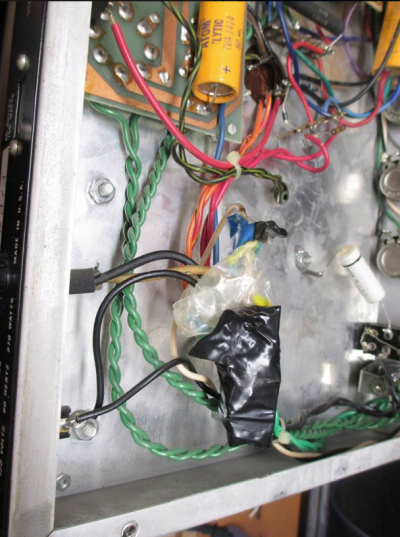tonepoet333
Tele-Holic
@Blrfl - I'm talking about the type of integrated circuit board pictured below. Each of those little black rectangles is a capacitor or a resistor. The only visual way to tell the difference is the labeling of Cxx for cap and Rxx for resistor.Nothing's integrated into the board. Boards is boards, parts is parts and there's always solder between 'em.
Compare that with boards where the components are much easier to identify and swap out.
tonepoet
www.jackshiner.com


